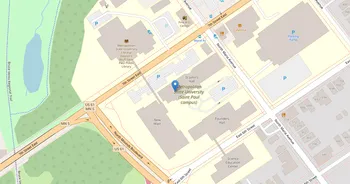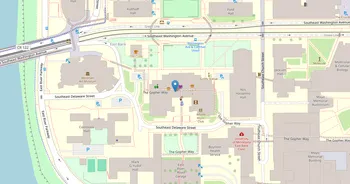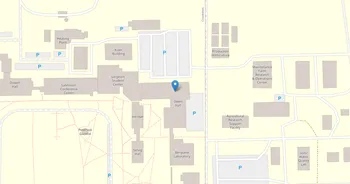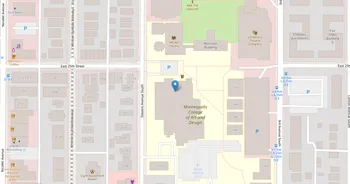Mayo Clinic College of Medicine and Science : Overview, Courses, Scholarships & Rankings
About Mayo Clinic College of Medicine and Science
Interesting fact: classrooms here sit alongside busy clinical floors, so learning and patient care unfold side by side. Mayo Clinic College of Medicine and Science is known for thorough, hands-on training in patient care, research, and health sciences. Students move between labs, simulation spaces, libraries, and teaching clinics, backed by advising, mentoring, wellness resources, and practical support that makes tough weeks manageable.
Campus culture feels calm, purposeful, and deeply collaborative. You'll find interprofessional clubs, service projects, journal discussions, and plenty of ways to unwind with fitness spaces, nearby trails, and a low-key coffee-and-arts scene. Career preparation is baked into daily life through team-based practice and access to practicing professionals; the professional network has a reputation for opening doors. And Rochester's welcoming, health-focused community offers real chances to serve, learn, and belong.
Key Institutional Details
Contact & Profile
Academic & Institutional
Academic Programs & Fields of Study
Mayo Clinic College of Medicine and Science offers 30 degree programs across 3 major academic fields, graduating approximately 573 students annually. The most popular fields by graduate volume are Health (24 programs, 522 graduates), Biological Sciences (5 programs, 42 graduates) and Engineering (1 programs, 9 graduates). Explore program details, award levels, and graduate demographics below.
Health (24 programs, 522 graduates)
Healthcare Professions, Medical Sciences and Clinical Practice
| Program Name | Graduates | Gender Distribution | Award Levels | CIP Code |
|---|---|---|---|---|
| Phlebotomy Technician | 104 |
|
Other Award
|
51.1009 |
| Medicine | 101 |
|
Doctorate (P)
|
51.1201 |
| Radiologic Technology | 45 |
|
Certificate (1-2 yrs)
|
51.0911 |
| Diagnostic Medical Sonography | 32 |
|
Certificate (1-2 yrs)
|
51.0910 |
| Physical Therapy | 28 |
|
Doctorate (O)
|
51.2308 |
| Nurse Anesthesia | 28 |
|
Doctorate (O)
|
51.3804 |
| Medical Science | 26 |
|
Master's
Doctorate (R)
|
51.1401 |
| Clinical Laboratory Technician | 24 |
|
Postbac Cert.
|
51.1004 |
| Physician Assistant | 21 |
|
Master's
|
51.0912 |
| Pharmacy Technician | 16 |
|
Other Award
|
51.0805 |
| Histologic Technician | 12 |
|
Other Award
|
51.1008 |
| Perioperative Nursing | 12 |
|
Postbac Cert.
|
51.3812 |
| Nuclear Medical Technology | 10 |
|
Certificate (1-2 yrs)
|
51.0905 |
| Respiratory Care Therapy | 10 |
|
Certificate (1-2 yrs)
|
51.0908 |
| Medical Radiologic Technology | 9 |
|
Certificate (1-2 yrs)
|
51.0907 |
| Dietetics and Clinical Nutrition | 9 |
|
Postbac Cert.
|
51.3199 |
| Emergency Medical Technology | 8 |
|
Certificate (1-2 yrs)
|
51.0904 |
| Magnetic Resonance Imaging Technology | 8 |
|
Certificate (1-2 yrs)
|
51.0920 |
| Cardiovascular Technology | 6 |
|
Certificate (1-2 yrs)
|
51.0901 |
| Cytotechnology | 6 |
|
Certificate (1-2 yrs)
|
51.1002 |
| Electroneurodiagnostic Technology | 3 |
|
Certificate (1-2 yrs)
|
51.0903 |
| Ophthalmic Technician | 2 |
|
Certificate (1-2 yrs)
|
51.1803 |
| Orthodontics | 1 |
|
Master's
|
51.0508 |
| Genetic Therapy | 1 |
|
Doctorate (R)
|
51.0914 |
Biological Sciences (5 programs, 42 graduates)
Life Sciences, Biotechnology and Biomedical Research
| Program Name | Graduates | Gender Distribution | Award Levels | CIP Code |
|---|---|---|---|---|
| Biochemistry and Molecular Biology | 16 |
|
Master's
Doctorate (R)
|
26.0210 |
| Molecular Pharmacology | 10 |
|
Master's
Doctorate (R)
|
26.1002 |
| Immunology | 7 |
|
Master's
Doctorate (R)
|
26.0507 |
| Neuroscience | 7 |
|
Master's
Doctorate (R)
|
26.1501 |
| Biological and Biomedical Sciences | 2 |
|
Master's
|
26.9999 |
Engineering (1 programs, 9 graduates)
Engineering Sciences and Applied Technology Solutions
| Program Name | Graduates | Gender Distribution | Award Levels | CIP Code |
|---|---|---|---|---|
| Biomedical Engineering | 9 |
|
Doctorate (R)
|
14.0501 |
Admission Requirements & Test Scores
Comprehensive overview of admission criteria, standardized test score ranges, and application requirements for prospective students at Mayo Clinic College of Medicine and Science.
Application Requirements
Data based on IPEDS for 2022-2023 academic year. Test score ranges represent the middle 50% of admitted students (25th-75th percentile). Requirements may vary by program.
Tuition, Fees & Estimated Costs
Overview of tuition rates, housing, and other annual education expenses for undergraduate and graduate students
Financial Aid & Student Support
Summary of scholarships, grants, student loans, and financial aid statistics for undergraduate students
Student Success Metrics
Graduation rates and post-graduation earnings to help assess student outcomes and long-term value of education.
Loan Burden & Repayment Outcomes
Breakdown of loan repayment rates and student debt levels by income and dependency status.
Frequently Asked Questions
Find answers to the most common questions about Mayo Clinic College of Medicine and Science
How much does it cost to attend Mayo Clinic College of Medicine and Science?
The annual tuition at Mayo Clinic College of Medicine and Science is $10,025 for in-state students. When including room and board, books, and other expenses, the total estimated cost is approximately $10,225 for in-state students. Additional costs include room and board $9,481 (off-campus) and books and supplies $200.
Data based on IPEDS program completions for 2022-2023 academic year. Tuition and cost estimates are approximate and may not include all fees, personal expenses, or transportation costs.
What academic programs and degree levels does Mayo Clinic College of Medicine and Science offer?
Mayo Clinic College of Medicine and Science offers 30 academic programs across 3 major fields of study, with available degree levels: Certificate (1-2 yrs), Postbac Cert., Master's, Doctorate (Research), Doctorate (Professional), Doctorate (Other), Other Award.
Most popular program areas include:
- Healthcare Professions, Medical Sciences and Clinical Practice (24 programs)
- Life Sciences, Biotechnology and Biomedical Research (5 programs)
- Engineering Sciences and Applied Technology Solutions (1 programs)
Data based on IPEDS program completions for 2023-2024 academic year. Numbers reflect programs where students graduated, not all offered programs.
What is the acceptance rate for Mayo Clinic College of Medicine and Science?
Mayo Clinic College of Medicine and Science has an 38.7% acceptance rate and a 93.8% yield rate, making it highly selective.
Admission statistics breakdown:
- Total applicants: 124
- Students admitted: 48
- Students enrolled: 45
Data based on IPEDS for 2022-2023 academic year. Admission statistics may vary by program and application cycle.
What financial aid and scholarships are available at Mayo Clinic College of Medicine and Science?
Mayo Clinic College of Medicine and Science provides financial aid to 11% of first-time, full-time students, with average grants of $1,900 and average loans of $0.
Average financial aid amounts by type:
- Institutional grants: $1,900
The university supports 30 students with grants and 0 students with loans annually.
Data based on IPEDS for 2022-2023 academic year. Financial aid amounts and percentages may vary by program, enrollment status, and individual circumstances.
What is the average salary for Mayo Clinic College of Medicine and Science graduates?
Mayo Clinic College of Medicine and Science graduates earn a median salary of $74,758 after 6 years and $79,652 after 10 years.
The salary range 10 years after graduation spans from $66,112 (25th percentile) to $91,612 (75th percentile).
Data based on IPEDS for 2022-2023 academic year. Salary data reflects graduates who received federal financial aid (approximately 60% of all graduates). Actual earnings may vary significantly based on program, location, and individual circumstances.
Related Universities




Found something useful? Help others discover it too! Share with friends, on social media, or save for later - every share helps someone find the information they need.